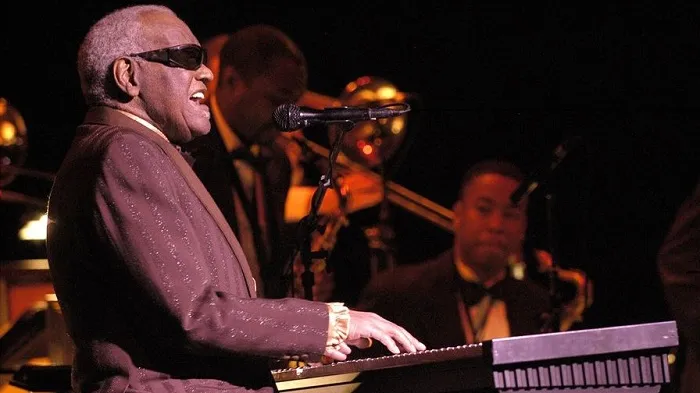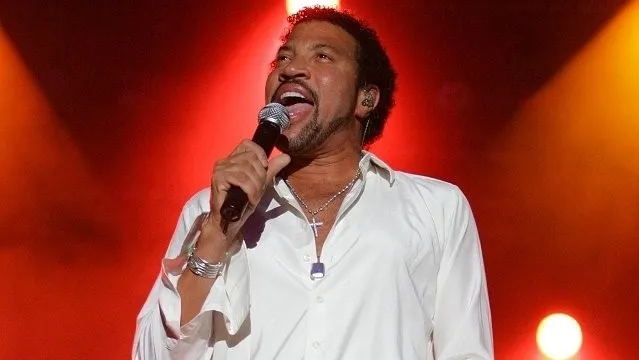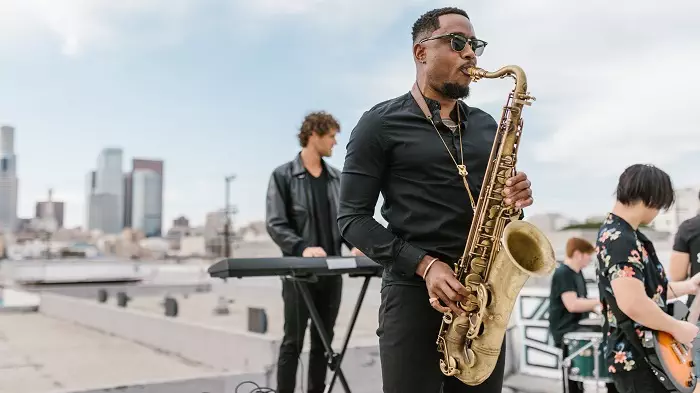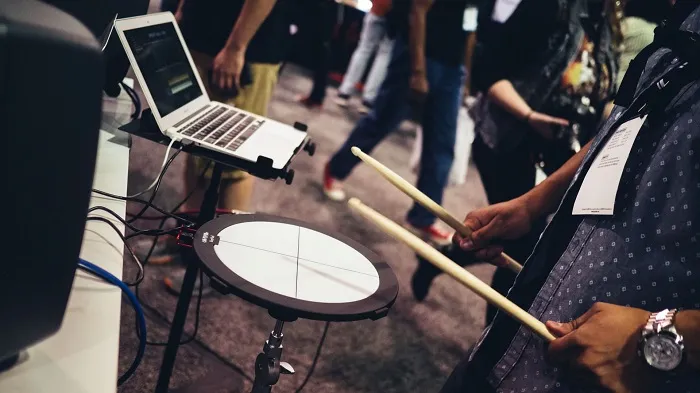The Rhythm and Blues (R&B) music genre that blossomed in the 1940s changed significantly with every passing decade. Some music experts even make the distinction between Classic R&B and Contemporary R&B.
R&B has always been a hugely popular type of music. Today, it boasts the highest number of hits among all the popular music categories.
This is one of many reasons we’d want to know what is R&B music? And what’s the secret behind its being near and dear to all sorts of audiences?
In the following sections, you can read all about Rhythm and Blues, the music genre that’s also known as R&B.
What Exactly is R&B Music?
R&B music is a broad description of various types of Pop music that emerged in postwar America. It’s strongly influenced by Gospel, Blues, Jazz, and Folk music. The Great Migration from the South to the North was a huge contributor to R&B, but it soon evolved to much broader articulations.
The Timeline of R&B and Its Major Milestones
The best way to understand R&B music is to follow its growth progress and see what else was taking place in the world at the time.
The 1940s: The Beginnings
A distinctive new genre of music started emerging from the 1930s that was clear in a shift of Urban music, Boogie-Woogie, and Jump Blues. The lyrics were lighter, and the rhythms were heavier.
In the 1940s, the Billboard Journal, as well as various record companies, referred to that new wave as Harlem Hit Parade or Sepia. These labels barely described the nature of that music, and weren’t that attractive to the audience.
It was Jerry Wexler who decided to call that sprouting genre Rhythm and Blues. That was in 1947, when he was editing the charts of the Billboard Journal, and the common labels of that time didn’t appeal to him at all.
It’s worth mentioning that Wexler was also an executive at the newly-launched Atlantic Records in 1947 – and a prominent figure in the industry as a whole. Around 1949, the Billboard had effected the change, and the new label of Rhythm and Blues became an individual genre.
Let The Good Times Roll by Louis Jordan is among the great songs that truly represent the beginnings of R&B.
The 1950s: Classical R&B Takes Shape
Record companies are pivotal in the success and popularity of any kind of music. It’s how songs spread from underground clubs out into the whole wide world. Records precede even radio broadcasting.
As the 1940s wrapped up, there were only a few recording companies that were interested in R&B music. Namely, Specialty, Modern, and RPM, all of who operated mainly in Los Angeles, and their repertoire wasn’t that impressive.
In 1947, a Jazz enthusiast and a music industry executive decided to create an independent record label. That was when Atlantic Records saw the light. Soon, Jerry Wexler joined the ranks, and the sprouting enterprise was unstoppable.
One of the first things Atlantic did was to bring over sound engineers who really knew what they were doing, and made magic with the soundtracks they laid on vinyl. The company moved its operations to New York where the music scene was rich and vibrant.
Another bold move that Atlantic made was bringing in talent as studio artists. This was a win-win arrangement that boosted the careers of the up-and-coming R&B performers, as well as generating huge profits for Atlantic.
The stellar roster of Atlantic included names like Ruth Brown, Ray Charles, and Lavern Baker who were taking their first steps. The Drifters came onboard right after that, with their lead, Clyde McPhatter, occasionally doing solos away from the band.
Following in the confident steps of Atlantic, many new labels appeared on the scene. King Records operated in Cincinnati, Vee Jay in Chicago, and Sun Records in Tennessee.
In the span of a few years, R&B was popular throughout the Northern and Midwestern States. In addition to the South, of course, where it all began.
Doo-Woop, Jazz, Rock ‘n’ Roll, and Blues were considered Rhythm and Blues subgenres, and most of the artists who leaned towards these tunes were also included in these labels. Their hit songs still appeared in the Billboard as R&B.
The 1960s: Soul and Rock Go Into Separate Ways
In the 1960s, white and black circles drifted apart, temporarily, as a result of some radical stances, like segregation.
Soul differentiated itself by adopting smoother tunes and more serious lyrics. Etta James’ mellow voice carried songs like Something’s Got A Hold On Me. And around the same time, Sam Cooke released his memorable songs The Great Pretender and Wonderful World.
White singers couldn’t resist the appeal of Soul, and songs like Paul Anka’s Puppy Love and Put Your Head on My Shoulders were instant hits in the emotionally charged 1960s.
While Soul music slowed down and went deeper into feelings, rockers sailed into rougher waters. The rhythm became quicker, the beats were harder, and the lyrics much more daring. Elvis Presley’s Such a Night, My Generation by The Who, and of course, Born to be Wild which Steppenwolf created as a score for Jack Nickleson’s 1969 movie Easy Rider.
Rock was still a black music genre. The split wasn’t that sharp, and songs like Let it Rock by Chuck Berry and Fats Domino’s My Girl Josephine created waves that still ripple up to this day.
Interestingly, the audiences of both genres remained mixed. The songs were broadcast over the radio and the records were sold in phenomenal sales to largely varied demographics.
The mainstream R&B of the 1960s was just as rich and prolific as the genres that grew on its fringes, Soul and Rock. The artists that started out in the 1950s became big names with solid stardom and outreaching popularity. The best R&B songs of the 1960s are still very present decades later.
Among the bands that took the 1960s by storm were The Beatles, The Rolling Stones, and The Who. Each one of these musical phenomena deserves a dedicated book, rather than a quick mention. While they all started under the wider label of Rhythm and Blues, they certainly redefined their individual music genres, which led to the further development of R&B.
This artificial and forced divide between black and white R&B was short-lived, and soon music found a way of unifying people. New variations of R&B were lurking right around the corner, and they entered into the 1970s with a drumroll!
The 1970s: Disco Lights, Funk, and Blues
The 1970s were an explosion of color, style, scientific advancement, and ideas. Exploration was the name of the game, and there was no upper limit on how far art could go. The boldness inherent in those years reflected on everything from big hair, to red plastic furniture, avant-garde movies, and Disco.
Once again, the lyrics and the beat morphed into a different form. Performances, concerts, stage arrangements, and dance moves were different. The newcomers, like the Jackson 5, The Moments, and The Persuaders broke new ground with their wildly popular hits.
Meanwhile, the seasoned artists who experienced the full journey of R&B seemed to be enjoying themselves tremendously in the funky 1970s. Al Green was among the biggest influencers of the new trends, and so were Marvin Gaye, Aretha Franklin, and James Brown.
The bands of the 1960s gained momentum in the 1970s, especially, with the advent of the cassette tape. Music was now totally portable, and people could play it in their cars, in cafes, at the beach, and pretty much anywhere that had a cassette player.
By the mid-1970s, The Bee Gees broke records with their many hits, and with the release of Stayin’ Alive, they were playing in a league of their own. Barry White was on the opposite side of the music spectrum with his deep voice and openly flirtatious lyrics. It’s Ecstasy When You Lie Down Next to Me is the perfect example.
Stevie Wonder also found huge success in the 1970s, and so did Diana Ross, Natalie Cole, and Tyrone Davis. Their music and their take on R&B pretty much shaped what the 1980s would look like. Michael Jackson, Earth, Wind, and Fire, Dionne Warwick, and Rod Stewart were getting ready for the new decade.
The 1980s and Beyond: Contemporary R&B
The spectrum of R&B seemed to have widened even more in the 1980s. Both in the number of artists who embraced it, and in the kinds of music that branched out of R&B. New instruments, vocal arrangements, and cultural interests developed Rhythm and Blues even further.
George Michael, Sade, Lionel Richie, and Sheena Easton took R&B towards mellow honey-like timbre. They depended hugely on the performer’s vocal prowess, in addition to addressing novel issues with their lyrics.
Discotheques were still the hottest spots to listen to music in full blast. But they became bigger, more glamorous, and DJing rose to an art form. The new R&B songs embraced that new scene, and the beat suddenly took the center stage.
Songs like Shout by Tears for Fears, Murray Head’s One Night in Bangkok, and Tina Turner’s Private Dancer. As for Michael Jackson’s Thriller, well, that had its own dance that people around the globe could perform.
The 1980s seems to be the pinnacle of R&B experimentation. The biggest change in the 1990s was probably the explosion of boy bands, the appearance of Hip-Hop, and the extended presence of some of the 1970s stars. Michael Jackson and Prince top that list.
Rough and gruff lyrics of the ‘hood started gaining a lot of popularity, especially, since most of them had a wise or emotional undertone. It was easy for the young demographic to identify with the stories these singers were telling and find inspiration in what they do.
The last year in the century witnessed the birth of bands that would take over the 2000s, like Destiny’s Child, Jay-Z, Brandy, and Ice Cube. This pretty much sums up the Contemporary R&B scene.
The Main Differences Between Classic and Contemporary R&B
Rhythm and Blues music is a bit of a mosaic with many contributions from various sources. This colorful nature, in turn, allowed for the development of various derivatives. Still, with all these nuances, R&B has some distinct features.
The clean-cut, high-energy beat, emotional impact, together with meaningful soulful lyrics make up the backbone of all R&B. The size of the band is often limited, the vocals rule, and there has to be a dance! This applies to the old as well as the new versions of that genre.
Music enthusiasts like to draw a line between two phases of R&B: the Classical period, which starts in the 1940s and extends to the closing chapters of the 1960s. The next period is usually called Contemporary R&B, and it starts at the onset of the 1970s, going on till our current times.
Here are the main differences between the two R&B varieties.
Classic R&B
Technology, culture, and the post-war mood shaped much of the direction of Rhythm and Blues as it took its first steps. The following are the basic characteristics of Classic R&B, but of course, variations occurred left and right.
1. Band Arrangement Looked Like Jazz
Jazz was already an established art form when R&B was still searching for its footing. Decades separated both genres, with Jazz providing inspiration and acting pretty much like a role model. Thus, it’s not too surprising that the early instrumental arrangements of R&B were quite similar to Jazz bands.
Pianos, cellos, saxophones, and drums were the stars of the show. And soon, they were joined by the up-and-coming guitars. The lead singer would typically take center stage, but occasionally, he would be the pianist as well.
The main aspect of R&B that deviated from Jazz was improvisation. R&B focused more on well-rehearsed songs and minimized the space given to jamming. Vocal and instrumental solos were encouraged, though.
2. Electric Guitars Were Present, But Not as Solos!
Electric guitars were all the rage in the mid-1950s and 1960s. Together with the drums, they kept the songs vibrant and filled with a solid beat. However, they were rarely allowed to play solo!
There were few exceptions to that rule, Like the Beatles, who treated the guitar with the same reverence they gave to vocals. Other players, like Ray Charles, preferred giving the piano almost all of the prominence after his own vocals. Occasionally, the back vocals would get an important interlude. Hit the Road Jack is a perfect example!
3. R&B and Rock Were Interchangeable
For quite a while, R&B songs merged with the Rock ‘n’ Roll space. The artists, record companies, Billboard magazine, and even the audiences were all unflustered by that. It was much later when R&B slowed down a little, and Rock picked up the beat a lot, that they became different genres.
4. Gospel and Southern Effects Were Clear
The Great Migration from the South was still fresh in the hearts of performers and their audience back in the 1940s and 1950s. The lyrics and music arrangements were deeply affected by the folklore of the Southern lands.
Church music was also a big influence at the time, as it was sometimes the only place where the poorer communities could learn and play music.
Contemporary R&B
The dependence on hot beats and fervent emotions remained through the years. Vocals also remained the main attraction for R&B, and singers like Beyonce, Alicia Keys, and Whitney Huston are perfect examples.
However, as the R&B matured, it seemed to gain far more confidence, glam, and audacity. Here are some of the features that characterized that phase.
1. Much More Tech Stuff
Technology easily steers culture in unexpected directions, and if you have any doubts about that, check your smartphone! Music is by no means immune to the advancements in digital instruments and MIDI software.
R&B actually benefited significantly from the newly-introduced musical effects, mixing tech, and even the endless possibilities of stage enhancement. Lights, sounds, and graphics were part and parcel of the new music scene. And it attracted a whole new demographic.
2. Hip-Hop Dominates the New Age R&B
Contemporary R&B has been through plenty of experimentation, including a long period of Disco and Funk. It seemed to be quite comfortable around Hip-Hop though, to the point that many of the younger folks STILL believe that they’re one and the same thing.
3. Dancing and Elaborate Choreography is Part of the Show
Dancing has always been an important part of the R&B experience. And so, it’s only natural to see this trait develop into more elaborate moves.
Concerts are rarely without a supporting choreographed show, and the harder the steps, the better. Michael Jackson’s MoonWalk is a living testament to that! And later on, Beyonce, Justin Timberlake, and Ciara wowed their audience with incredible moves.
4. Powerful Vocals and Heartfelt Expression
Contemporary R&B is all about that soulful, heartfelt vibe that just hits you right in the feels. R&B artists use the music to pour their hearts out.
For Contemporary R&B artists, it’s not about belting out lyrics as if it’s another Rock anthem. These artists use techniques like runs, ad-libs, and tight harmonies to add more depth and emotion to their songs.
5. A Fusion of Styles That Push Boundaries
Contemporary R&B artists are also not afraid to experiment and try new things. They’re not just sticking to the traditional R&B sound – they’re mixing it up by blending in elements of Pop, Hip-Hop, Electronic, Disco, and even Alternative R&B.
By fusing all these different genres together, they’re creating some really fresh and exciting new sounds. It’s like they’re constantly pushing the boundaries of what R&B can be, and that’s what keeps the genre feeling so current and appealing to such a wide range of listeners.
What is R&B Music: Conclusion
You never know what you’re going to get with Contemporary R&B music, but you can always count on it being a unique and innovative musical experience.
What unites these styles is a focus on emotional expression, vocal prowess, and a driving rhythmic foundation. Whether it’s the smooth harmonies of Classic R&B or the innovative sound of today’s Contemporary R&B artists, the genre continues to captivate listeners worldwide with its rich, emotive sound.
















